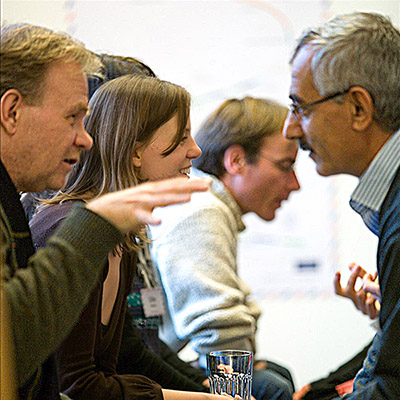
TARGET GROUP
Is participant experience relevant?It's okay if participants haven't seen the inside of a classroom in years. Physical trust needed
Mental trust needed
Material DescriptionPaper, printer, pencils. REQUIREMENTSDuration30 minutes – 2 hours Experience level of the facilitatorroutine as participant OR professional facilitator Number of facilitators0-2 CHARACTER OF THE METHODLevel of activationcalmingWoo-Woo Level – How touchy-feely is this method?From 1.Rationalist-Materialist “No feelings here, folks.” to 5.Esoteric-Shamanic Bleeding Heart: Innovation Phases:• 3 Fostering New Perspectives & Ways of Thinking Method Category:• Awareness raising |
SHORT DESCRIPTIONIn Coaching Dialogue, your partner asks you questions. By answering these questions you form a strategy of implementing solutions to achieve your aims. ALTERNATIVE NAME OF THE METHODMy aim is to... - and how to achieve it? BACKGROUNDBACKGROUND AND PURPOSEThis method is based on coaching questions which help strategize on how to achieve a goal. One can do this exercise during, for example, a motivational training. Asking coaching questions can be an inspiring learning session. Prepared coaching questions give someone the space in which to step back and examine himself/herself. The right questions can help to someone see their own actions from a different perspective or envision a new solution to an old problem. ORIGINAL SOURCEPracownia Psychologiczna Elżbieta Sołtys STEP-BY-STEP GUIDEhttp://betterlifecoachingblog.com/2010/08/04/50-great-coaching-questions/PREPARATION (excluding materials)A. Prepare a list of questions (you can use those which are listed below or you can modify them. If you would like to add new questions you should remember that they should be phrased as open-ended queries. It can be helpful to think about the first word: open-ended questions often begin with “what,” “how,” “who,” “where,” and “when.” Stay away from “why” – it can feel confrontational and judgmental. To get at the same thing, instead ask, “What was your intention with that?” Leave empty space after each question for note taking. 1 Round 1Divide group into pairs. In first round, person "A" asks questions to person "B" and makes notes. 2 Round 2In the second round, person "B" asks questions and makes notes and person "A" answers them. During both rounds you should give as much time as needed for each person. The asking person can make additional or clarifying questions if needed but with rule above. HARVESTAfter finishing dialogues, the whole group gathers to exchange their opinions/emotions/feedback about this exercise. FURTHER INFORMATION |